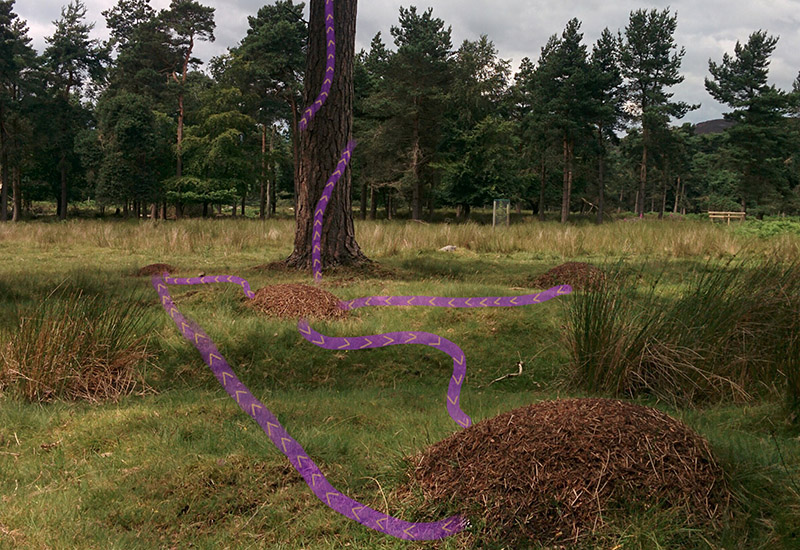Biologists Explore How Human Networks Can Be Made Ant-like
May 12, 2021
Ant behavior has been a source of inspiration since at least the time of Aesop, and 2,500 years later, it appears these insects still have a certain kind of wisdom to impart—perhaps to engineers building subways.
“Each individual ant doesn’t know much about the world beyond her own antennae,” says Harvey Mudd College biology professor Matina Donaldson-Matasci, “but they can collectively do really tricky things and find good solutions very efficiently—so much so that computer scientists have developed a whole subfield studying tough problems that can be solved by ‘Ant Colony Optimization.’”
In a paper published in the Proceedings of the Royal Society B, Donaldson-Matasci, Harvey Mudd alumna Hannah Larson ’20 and collaborators at George Washington University and at the universities of York and Exeter in England used laboratory and field observation of ant behavior plus computer modeling to explore how ants build complex transport networks. Larson, a mathematical and computational biology graduate, spent summer 2019 working on the project at the University of York.
Researchers have long known that ants leave trails of pheromones, chemicals that induce other ants to follow those trails. The Ant Colony Optimization algorithm was inspired by ants that, simply by laying pheromone unconditionally wherever they go, find the shortest paths between locations.
While some ants tend to build networks including only the shortest paths and without any extra links, many seem to add strategically placed long-distance trails to their network as well. The newly published paper suggests that these long-distance trails are there because these ants selectively leave more pheromone on trails that lead to better food sources even if those sources are farther away. Those longer trails raise the cost (the distance traveled) but result in more efficient travel and alternative routes in case something goes wrong, Donaldson-Matasci says.
“The ants sometimes use faraway but super-awesome food resources,” Donaldson-Matasci says. “The resulting network costs a little more to build, but it’s also more efficient at transport, and it still functions when damaged.”
So how could this be applied to subway systems or, as another example, internet routing networks?
The researchers used computer modeling to simulate networks based on the hypotheses they made about the rules of the ants’ behavior, finding that the networks they created corresponded closely to the actual observed transport systems of the ants.
“Our goal was just to figure out simple rules to make networks that look ant-like,” says Donaldson-Matasci, who had another recent paper published on tree ant networks. “But different ant species make different kinds of networks: some tend to make low-cost networks with few and short connections, while others make efficient and robust networks with more connections. We hope that by studying the networks of different types of ants, we will inspire computer scientists to come up with more flexible algorithms, so we can build networks that balance cost, efficiency and robustness in different ways.”
